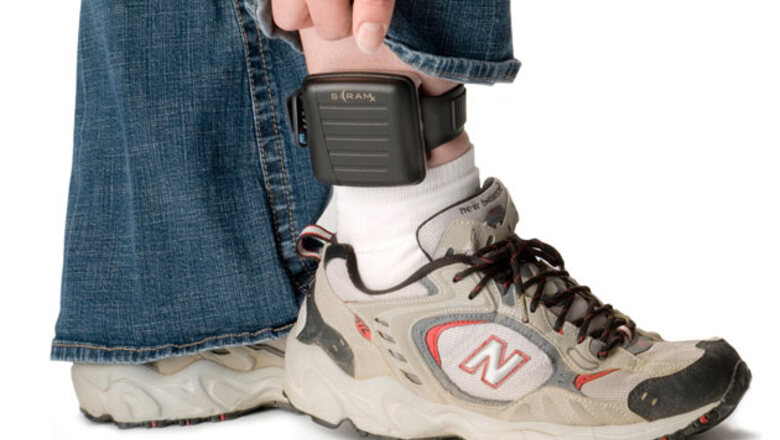
views
New York: If an alcohol-monitoring bracelet can keep celebrities like Lindsay Lohan from drinking, some parents might wonder, Can I get one for my teen?
The answer is no.
For the time being, the ankle bracelets are only sold to the courts, probation officers and others who want to make sure drunken drivers or anyone involved in alcohol-related offenses don't drink again.
"That might be a market down the road," said Kathleen Brown, a spokeswoman for Alcohol Monitoring Systems Inc., which makes the only alcohol ankle bracelet.
In the meantime, the Denver-based company is focusing on the corrections market, she said.
One of the devices was slapped on Lohan's ankle Monday by a judge angered because the actress didn't show up for a hearing last week in Beverly Hills, Calif., and instead attended the Cannes Film Festival in France. It's her second go-around with the bracelet - and she's not the only celebrity to sport one.
Rapper-actress Eve wore one and ex-basketball star Jayson Williams was forced to earlier this year.
The gadgets are much like the better known electronic ankle bracelets that have been used for years to restrict suspects or parolees to their homes. (The alcohol bracelets can now do that too, if needed.)
The bracelet uses the same technology as a Breathalyzer, but instead of checking the breath for alcohol, it samples the perspiration on the skin. After alcohol is consumed, it eventually enters the bloodstream and a small amount is expelled through the skin.
The bracelet tests the skin every half hour. If there's alcohol, it causes a chemical reaction in the device's fuel cell. Usually once a day, the information is sent over phone lines to the company, which alerts the courts or probation officer if alcohol is detected at a blood-alcohol level of 0.02 or higher.
It won't pick up very small amounts and it takes a while to reach the skin. A 180-pound man would register 0.02 if he has two 5-ounce drinks in less than an hour on an empty stomach, according to Brown.
The alcohol bracelets - called SCRAM for Secure Continuous Remote Alcohol Monitoring - have been available since 2003, and are in use in every US state except Hawaii. To date, they've been worn by 136,000 people, for an average of 90 days, Brown said. The device costs about $ 1,500, she said.
South Dakota has about 600 units and uses them in its 24/7 Sobriety Project, which requires daily monitoring for alcohol - either two trips to the county jail for a breath test or wearing a bracelet.
"Some people don't want to look at a deputy sheriff two times a day. It's a humbling experience," said South Dakota Attorney General Marty Jackley, whose office successfully defended a court challenge of the device in South Dakota Supreme Court.
Given a choice between the sobriety project or jail, "Most people will obviously choose to go back to their family, go back to their job, to go be a parent and work it out," Jackley said.
Los Angeles County Sheriff's Department spokesman Steve Whitmore said the SCRAM is used frequently and is very effective. He said there are many stories about people trying to disable the signal.
"I heard about someone who tried to put chicken skin between the signal and his skin, but it didn't work," Whitmore said.
Brown, the company's spokeswoman, said there are sensors that check for tampering.
Stephen Bouchard, a judge in Missouri's Jefferson County near St. Louis, handles drunken driving cases, and says he's a fan of the bracelets. They are often required of anyone released on bond, and defendants are charged $ 12 a day.
"You sure don't want to have the person on bond on an alcohol-related offense going out and getting drunk and hurting someone else. That pretty much stops that," said Bouchard.
He said the bracelets are also used in other alcohol-related offenses, like domestic violence. And on a few occasions, someone has asked to keep the bracelet longer than required.
"It's kind of like their security blanket. As long as they know they've got that SCRAM monitor on, they feel more in control of their drinking," he said.
In Los Angeles, defense attorney J. Michael Flanagan, who represents many DUI defendants said the problem with the device is that it is bulky and very uncomfortable. Flanagan said one of his clients had the option of wearing the device or going to jail. After a few days, he said, the man complained that it was irritating his skin and was so uncomfortable he couldn't sleep. He took it off and went to jail, he said.
The latest version is smaller - about the size of a deck of cards - and lighter than the first device.


















Comments
0 comment